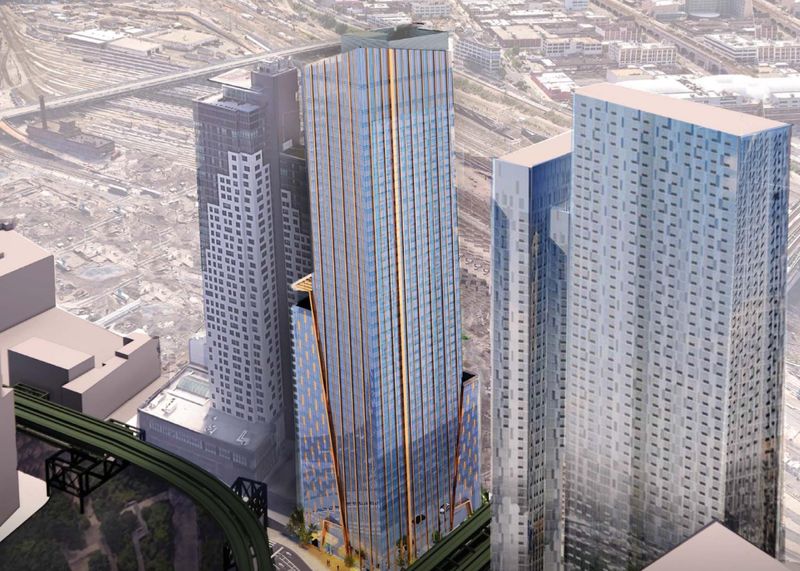By Philip Newman
“We wanted to try to give some idea of what $9 billion buys,” said Ted Kleiner, program director for the JFK Redevelopment Program. Kleiner and Warren Kroeppel, general manager of LaGuardia Airport, spoke using an elaborate graphics presentation to the Queens Borough Board Tuesday.
American Airlines is spending $1.2 billion on a 55-gate project to upgrade its terminal at JFK and Delta more than $1 billion on its new terminal. British Airways, Korean Airlines and others are in the midst of huge construction projects.
Kleiner said that besides the rebuilding of nearly all nine JFK terminals, the roadway system has been reconstructed.
“This is going to mean a shorter and more direct trip to whatever terminal that is your destination,” Kleiner said. He mentioned a new, higher control tower for greater visibility for air controllers and parking garages that will be closer to terminals than the spread-out lots long in use at Kennedy.
“Much of this construction at JFK is replacing structures that were 40 years old,” he said.
Kleiner said Terminal 4, which is scheduled to open in May, was begun more than three years ago and will be the only terminal with an indoor station for the AirTrain, a rapid transit system to bring passengers from Manhattan to JFK. The train will make stops at all terminals after leaving the station in Jamaica and running down a median strip on the Van Wyck Expressway. Passengers will change to the AirTrain from the Long Island Rail Road after boarding in Penn Station.
Rosemary Murray of Community Board 14 said it was an ordeal to try to pick up an arriving passenger at Kennedy in a car .
“You must make it a priority to see that it is made easier, such as it is at LaGuardia,” Murray told Kleiner.
When Kleiner mentioned Terminal 5, including the futuristic 1962 TWA terminal designed by Eero Saarinen, one community board member objected to Port Authority plans to build on several sides of the renowned structure even though it would be saved, saying it “defeats the purpose of the landmark status of the Saarinen building.”
Kleiner said further discussions on the plan would no doubt be held.
He said the ultimate result of the mammoth project is that every plane that lands at JFK will have its own gate. At present, many arriving passengers have to take buses or people movers to terminals because of a shortage of boarding gates at JFK. It now has 168 gates and will have 198 when the renovation is completed in 2005.
Kleiner said Kennedy now handles 33 million passengers annually and will soon be capable of processing 45 million.
As for LaGuardia, the airport's general manager, Warren Kroeppel, said “unlike Kennedy, we cannot expand. We are limited by water on one hand and road systems on the other.”
LaGuardia takes in 670 acres, while JFK covers 5,000 acres.
Kroeppel acknowledged that much of the ongoing work at his airport was not exciting to describe.
“This airport is built on landfill,” he said, “and a lot of it was built and refurbished decades ago and the things being done are necessities, such as runway deck expansion joint replacements and rehabilitation.
Kroeppel said the strengthening included preparing for the added weight of the new Boeing 767-400, a stretched version of a wide-body jetliner in service for more than 10 years. It would be perhaps the heaviest plane to serve LaGuardia and the first such planes are scheduled to arrive in April.
Kroeppel also listed other LaGuardia projects: new sign systems in the terminal and parking garages; roadway and garage improvements; beautification of the Marine Air Terminal, the landmark terminal where seaplanes departed for Europe before World War II; and replacement of central heating and air conditioning plant and fire station.
When all the work is completed at LaGuardia, Kroeppel said the pricetag would be $100 million.

































